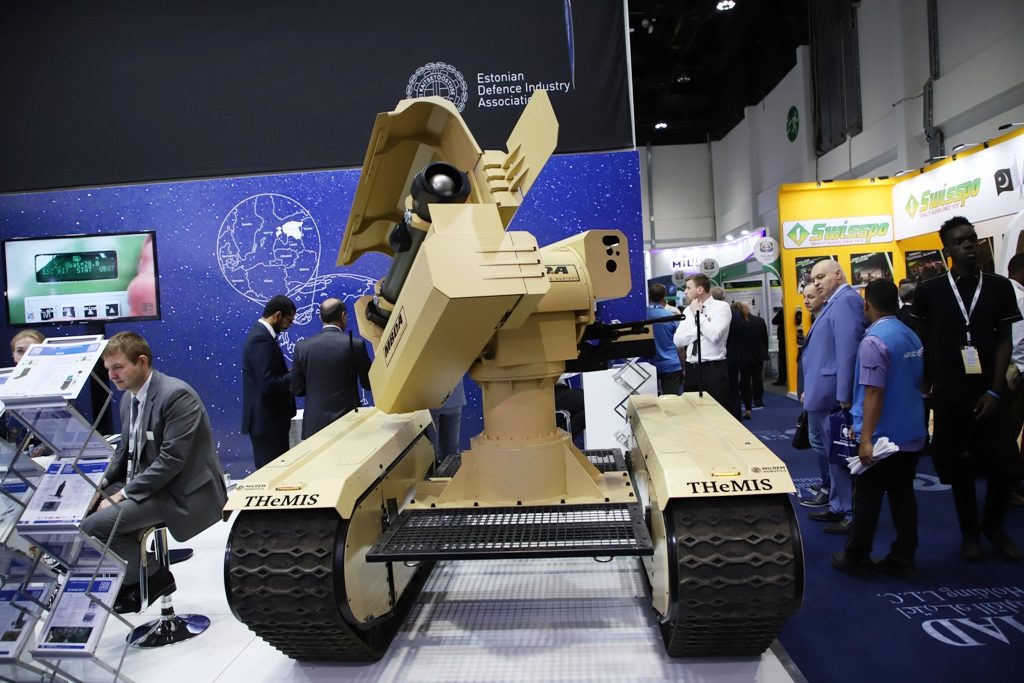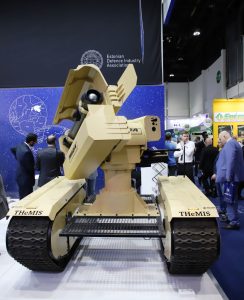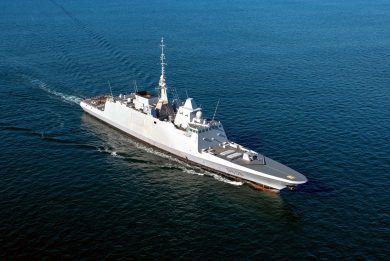
IDEX 2019: a robotised tank-killer from Milrem/MBDA
Announced at Eurosatory, the feasibility study for an antitank unmanned system made of the THeMIS tracked UGV and the one-missile IMPACT turret armed with the MMP 5th generation missile has already come to fruition, the prototype of the system having been unveiled at IDEX by Milrem of Estonia and MBDA, the European Missile Company.

The THeMIS chassis seen on the Estonian company stand was far from being the only one of its kind exhibited at Abu Dhabi IDEX/NAVDEX exhibition, the 1.45 tonnes tracked robot having become the most widespread platform in the western world. With a 750 kg payload, it is 2.4 meters long, 2 meters wide and 1.11 meters high, the THeMIS has a hybrid diesel-electric drive allowing it to reach up to 20 km/h and to cope with a 60% slope. Used in the hybrid mode it can operate for 8-10 hours while in the all-electric mode its endurance is of 0.5-1.5 hours. Tiho Terras, the former Chief of Defence of Estonia and now President of the Defence Division at Milrem underlined the effectiveness of such a system: “thanks to its low profile and its low thermal and acoustic signature, this platform/payload pair can be a real threat to any modern MBT, the latter problem being to see the robotized system.” According to Milrem representatives in 10 years time UGVs will start dominating the battlefield. Safety remains one of the major issues, a man in the loop being always required while autonomy will only be provided for mobility. Francis Bordachar, military advisor land at MBDA underlined how much such systems may disrupt the current understanding of the battlefield, the French Army looking at new tactics that include both men and robots. On its side, the Estonian Army should deploy the recce/mule version of the THeMIS in Mali, where it will soon join the French Army.
While currently the level of autonomy is still quite basic, Milrem is working hard on developing follow-me and sentry functions, a system that would allow working in GPS-denied environment being also among the development items. The current version of the THeMIS is the fifth iteration of the THeMIS, which has seen considerable improvements on the energy system, the autonomy level, and the user’s interface for teleoperations.
Kuldar Väärsi, CEO of Milrem Robotics, underlined how his company has evolved in only 5 years, reaching over 100 persons in such a short time. We should not forget that Estonia leads the Integrated Unmanned Ground System (UGS) project launched by UE PESCO in November 2018, the other nations involved being, Belgium, the Czech Rep., Spain, France, Latvia, Hungary, Netherlands, Poland and Finland. This programme aims at developing a capable Modular Unmanned Ground System (MUGS), a multi-mission platform that can carry different payloads and sensors, with cyber secure autonomous navigation capability for route and mission planning and an EW resilient Command & Control interface capable of swarming, interoperable with existing C4 systems.
Photos by Paolo Valpolini


